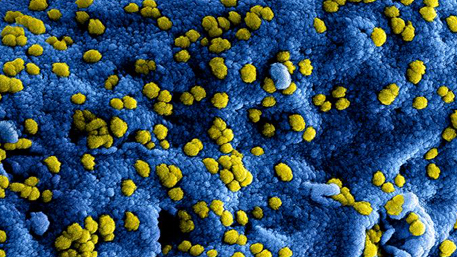
Modeling Contact Tracing Strategies for COVID-19 in the Context of Relaxed Physical Distancing Measures
A Bilinski et al JAMA Network Open, August 21, 2020
A Bilinski et al JAMA Network Open, August 21, 2020
To support efforts to control COVID-19, contact tracing must be implemented alongside prompt and extensive community case detection, and a high proportion of contacts must be reached. Our estimates imply that contact tracing could support partial relaxation of physical distancing measures but not a full return to levels of contact before lockdown.
AI Methods Make COVID-19 Forecasting More Local
S Fernandez, Nexgov, August 10, 2020
S Fernandez, Nexgov, August 10, 2020
Artificial intelligence techniques have inspired a new COVID-19 forecasting model provide timely information at a more localized level. The researchers say that officials and anyone in the public can use in their decision-making processes. “We are all overwhelmed by the data, most of which is provided at national and state levels.”
Physics-informed machine learning for the COVID-19 pandemic: Adherence to social distancing and short-term predictions for eight countries
GD Bamparis et al, ARXIV, August 20, 2020
GD Bamparis et al, ARXIV, August 20, 2020
Image quality assessment for closed-loop computer-assisted lung ultrasound
ZMC Baum et al, ARXIV, August 20, 2020
ZMC Baum et al, ARXIV, August 20, 2020
Autonomous Social Distancing in Urban Environments using a Quadruped Robot
T Fan et al, ARXIV, AUgust 20, 2020
T Fan et al, ARXIV, AUgust 20, 2020
A Data-Efficient Deep Learning Based Smartphone Application For Detection Of Pulmonary Diseases Using Chest X-rays
S Shalu et al, ARXIV, August 19, 2020
S Shalu et al, ARXIV, August 19, 2020
Considerations, Good Practices, Risks and Pitfalls in Developing AI Solutions Against COVID-19
A Luccioni et al, ARXIV, AUgust 13, 2020
A Luccioni et al, ARXIV, AUgust 13, 2020
A review on the mobile applications developed for COVID-19: An exploratory analysis
MN Islam et al, ARXIV, August 20, 2020
MN Islam et al, ARXIV, August 20, 2020
Genomic epidemiology reveals transmission patterns and dynamics of SARS-CoV-2 in Aotearoa New Zealand
JL Geoghegan et al, MEDRXIV, AUgust 20, 2020
JL Geoghegan et al, MEDRXIV, AUgust 20, 2020
We generated 649 SARS-CoV-2 genome sequences from infected patients in New Zealand representing 56% of all confirmed cases in this time period. The proportion of D614G variants in the virus spike protein increased over time due to an increase in their importation frequency, rather than selection within New Zealand. These data also helped to quantify the effectiveness of public health interventions.
Is "No test is better than a bad test"? Impact of diagnostic uncertainty in mass testing on the spread of Covid-19
N Gray et al, MEDRXIV, August 20, 2020
N Gray et al, MEDRXIV, August 20, 2020
The COVID-19 Pandemic Vulnerability Index (PVI) Dashboard: monitoring county level vulnerability
SW Marvel et al, MEDRXIV, August 20, 2020
SW Marvel et al, MEDRXIV, August 20, 2020
We integrated baseline data on relevant community vulnerabilities with dynamic data on local infection rates and interventions into a Pandemic Vulnerability Index (PVI). The PVI presents a visual synthesis of county-level vulnerability indicators that can be compared in a regional, state, or nationwide context. We describe use of the PVI, supporting epidemiological modeling and machine-learning forecasts, and deployment of an interactive, web Dashboard.






















.png)









No hay comentarios:
Publicar un comentario